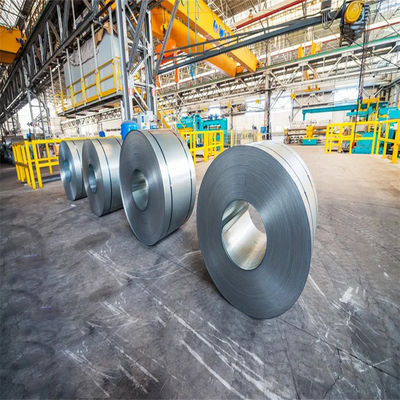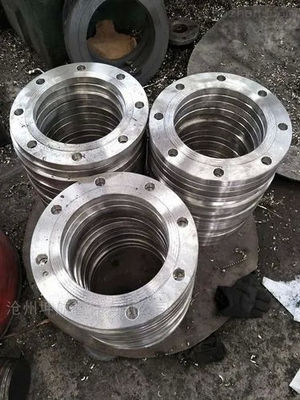Easy Alignment Cost Effective Loose flange ASMEB16.5 Class150
1.Product Description
A Loose Flange, also known as a lap joint flange or loose flange, is not fixed directly to the pipe but is instead loose and slides over the pipe . It typically partners with a stub end (a welded collar or a lap ring), which is first welded or otherwise attached to the pipe. The loose flange then bolts this assembly to a mating flange, but it does not take the pressure load itself; its primary role is to facilitate connection and alignment .
This design offers several key advantages:
-
Material Savings: The flange itself can be made from a different, often less expensive material (like carbon steel) than the stub end, which can be a costly corrosion-resistant alloy like stainless steel, copper, or aluminum .
-
Ease of Alignment: Since the flange can rotate freely around the pipe, it is much easier to align bolt holes during installation, especially in tight spaces or with large-diameter pipes .
-
Ease of Maintenance and Inspection: It is well-suited for systems that require frequent disassembly for cleaning, inspection, or maintenance .
-
Suitability for Corrosive Media: By using a stub end made of corrosion-resistant material, the flange is ideal for pipelines carrying corrosive fluids .
2.Key Product Parameters
The design and manufacturing of loose flanges are governed by various international and national standards. Key parameters include:
3.Product Applications
Loose flanges are versatile components used across numerous industries, particularly where ease of assembly, maintenance, or corrosion resistance is important:
Corrosive Media Pipelines: They are highly suitable for transporting corrosive substances . The stub end in contact with the fluid can be made from corrosion-resistant materials like stainless steel, copper, or aluminum, while the flange itself can be made from carbon steel, offering a cost-effective solution .
Systems Requiring Frequent Disassembly: Ideal for pipelines and equipment that need regular inspection, cleaning, or maintenance, such as in food processing, pharmaceuticals, and chemical plants . Their rotatable design makes bolt alignment during re-assembly straightforward .
Non-Weldable Pipes: Used with pipes made of materials that are difficult to weld, such as plastic pipes or glass reinforced plastic (GRP) pipes, where the stub end provides a reliable connection point .
I hope this structured overview helps you understand loose flanges better. Should you have more specific questions regarding a particular standard, material, or application scenario, feel free to ask.
Loose flange
ANSI/ASME B16.5 weld neck flange
ANSI B 16.5 weld neck flange
1/2" 3/4" 1" 1-1/4" 1-1/2" 2" 2-1/2" 3" 4" 5" 6" 8"

Q: Are you trading company or manufacturer?
A: We are factory.
Q1: Can you provide a sample before a big order?
A: Yes, we can provide you the free samples, but you need to bear their own delivery costs.
Q2: Whether there are some discounts for large quantities or not?
A: To be honest, we not only offer discounts to you because of quantity but also discounts to you when we do the promotion during
purchase season.
Q3: If products have some quality problem, how would you deal with?
A: Normally all our products get quality check and pressure testing before shipment.It quality problem due to wrong use, we will
suggest some solution but not take cost, If it is products quality due to our production, we will provide solution and take
related repair cost
Q4: How long is your delivery time?
A: Generally it depends on quantity and products types. If goods are in stock, the delivery time is within one week. It will be
25-45days if it is cunsonmer-made production.
Q5: What is your payment term? A: T/T 30% for deposit, balance to be paid before shipment. or L/C.
Q6: Do you offer customizationg or OEM service?
A: Of course, It is customization when we finish production according to customers' requrements. If brand OEM, please offer the
brand letter of authorization to me for exporting later.

 ¡Su mensaje debe tener entre 20 y 3.000 caracteres!
¡Su mensaje debe tener entre 20 y 3.000 caracteres! ¡Por favor revise su correo electrónico!
¡Por favor revise su correo electrónico!  ¡Su mensaje debe tener entre 20 y 3.000 caracteres!
¡Su mensaje debe tener entre 20 y 3.000 caracteres! ¡Por favor revise su correo electrónico!
¡Por favor revise su correo electrónico! 







